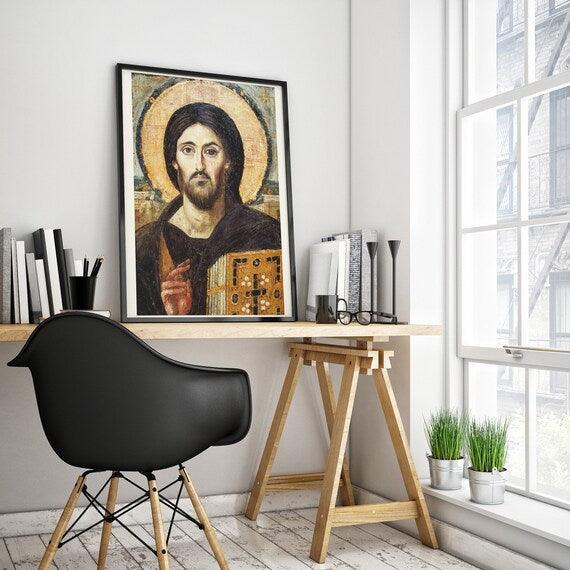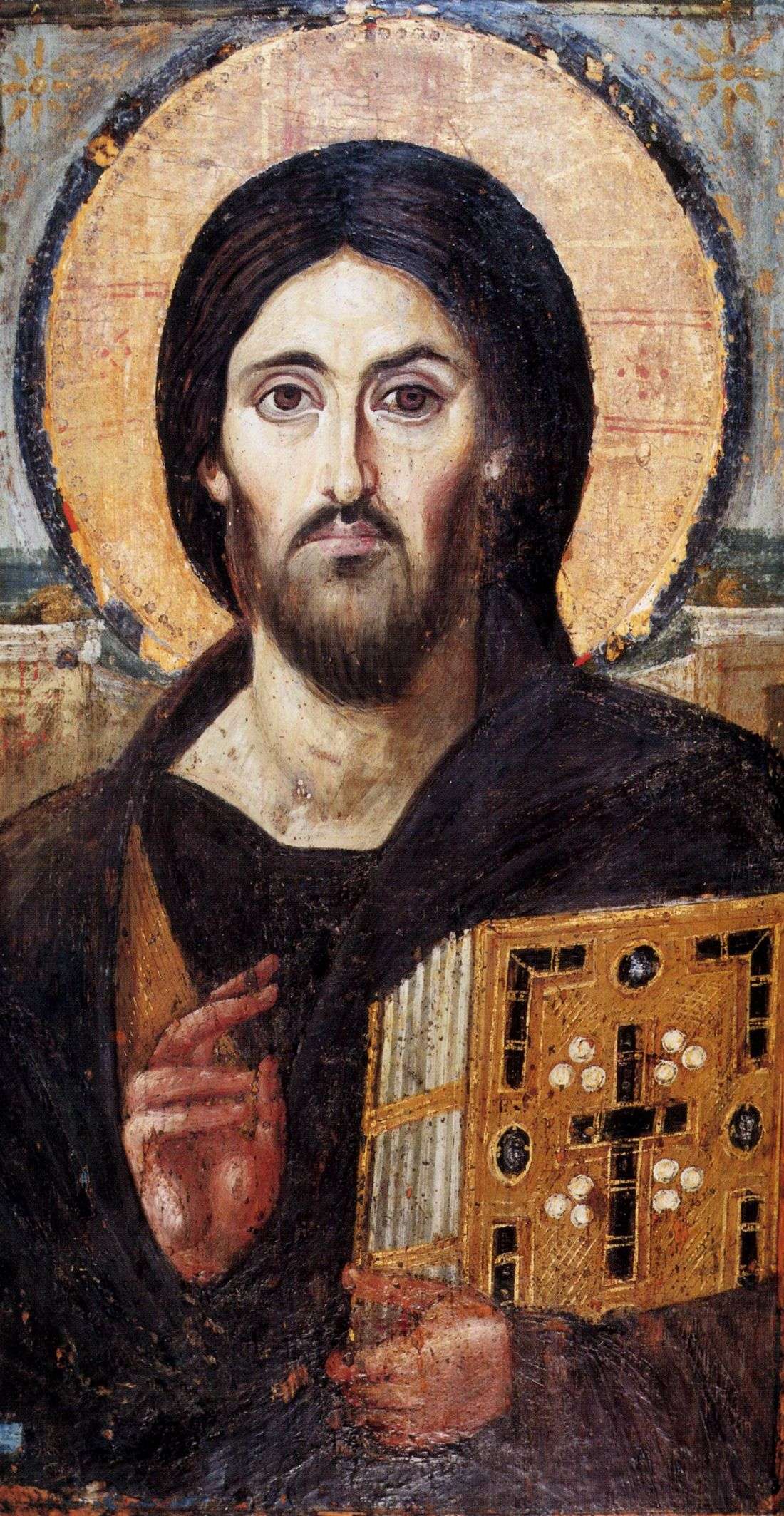Description
The Christ Pantokrator is a painted wooden panel dating from the 6th century from the Monastery of Saint Catherine located in Sinai, Egypt. This painting is considered one of the oldest Byzantine religious icons and is the oldest known work in the Pantokrator style.
The painted panel has a height of 84 cm with a width of 45.5 cm and a depth of 1.2 cm. The painting is believed to have originally been larger, but it was cut away at the top and sides at some point, for unknown reasons, to produce the current dimensions. In the work Christ is shown dressed in a purple robe. - a color commonly chosen to represent those of imperial status and royalty. This color choice for his robe is a symbol of his status and importance. Christ is represented raising his left hand as a sign of blessing and holding a book with his right.
We can assume that this book is probably a Gospel because it is adorned with cross-shaped jewels. The painting is deliberately asymmetrical to symbolize the dual nature of Christ. The left side of Christ is a symbol of his human nature with his features depicted as much softer and lighter. While the right side of Christ symbolizes his divinity with his severe gaze and intense features. The eyes themselves are different in shape and size, as well as the hair on her left side that is gathered behind her shoulder.
One of the most important Christian icons is Christ Pantokrator. This image portrays Jesus as the sovereign ruler of the world. The Christ Pantokrator was one of the oldest images of Jesus and appears in the most prominent places in cave churches.
The word Pantokrator means "Almighty". In the Greek version of the Old Testament (LXX), the word pantocrator is the translation of "Lord of hosts" and "God Almighty." In the book of Revelation, pantocrator appears nine times as a title emphasizing God's sovereignty and power.
The Christ Pantokrator icon emphasizes the omnipotence of Jesus, his power to do anything. Jesus is the “Ruler of All” who upholds all things. The symbolism of Christ Pantokrator (explained below) is inspired by Roman imperial imagery to project his sovereign power. The early Christians used cultural symbols to proclaim the sovereign power of the risen Christ.
Furthermore, the placement of Christ Pantokrator in the apse (the wall of the front sanctuary) also has theological significance. Byzantine churches were modeled after the Roman basilica, the king's chamber to hold court. The apse was the position of authority where the ruling official sat. The position of Jesus in the apse declares that he is the rightful ruler and sovereign judge over all.
Christians began to visually represent Jesus in the late 300s, once the threat of persecution no longer existed. These early images present Jesus as a stoic figure seated on a throne with a scroll. In the 600s, Christ Pantokrator emerged as a simplification of that early image. The appearance of Christ Pantokrator has hardly changed in the last 1,500 years.
Most of the early images of Jesus were destroyed during the iconoclastic controversy.


